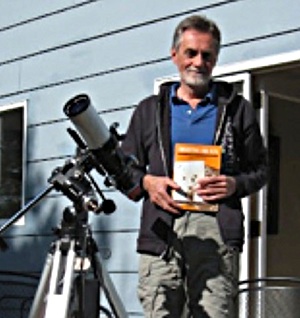Rodney H. Howe 2014-2015

Computer Science, B.Sc.; Remote Sensing/Geographical Information Systems, M.Sc.
Landsat and AVHRR satellite data at the U.S. Department of Agriculture.
"Diversity in the AAVSO observers makes for a vibrant and robust data pool. What I find amazing is how many young folks (mostly high school age) come to AAVSO for help in building VLF radios, or counting sunspots, and how often they are interested in space-weather. The Solar Section seems to maintain a constant turnover rate in observers, which statistically means we’ll have few worries in keeping the American Relative sunspot index robust for the long-term.
"Knowledge from this type work has given me some experience with processing images of dense globular clusters, using images collected by AAVSO net of telescopes. I’ve been a member of AAVSO since 1999, when I began collecting Very Low Frequency radio data on Gamma Ray Bursts and Solar Ionosphere Disturbances (SID). I retired from the USDA in 2010.
"I am currently the Solar Bulletin editor and chairperson for AAVSO Solar Section. I do the reporting for the (SID) detections for the AAVSO Solar Section in the process of collecting and recording the VLF radio SID events caused by solar flares. SID event submissions come from observer locations around the world. In writing the Solar Bulletin we also collect all visual observations of sunspot counts and store these data in the SunEntry database. All sunspot data are submitted by those AAVSO observers who take their optical and CCD observations of daily sunspot counts.
"I’ve done what I can, since I became the Solar Section Chair in 2010, to promote the AAVSO Solar Section’s optical sunspot counts to solar scientists around the world, who are interested in the long standing American Relative sunspot index. By attending the last four Sunspot Number Workshops http://ssnworkshop.wikia.com/wiki/Home the AAVSO solar sunspot number is becoming recognized as a published index. These workshops give exposure to 30 or 40 solar scientists about how the AAVSO has collected and reported solar observations for the past 70 years as the American Relative sunspot number. All the sunspot observations in the AAVSO SunEntry database are contributions from over 70 visual observers around the world who do their best to count sunspots on a daily basis."

